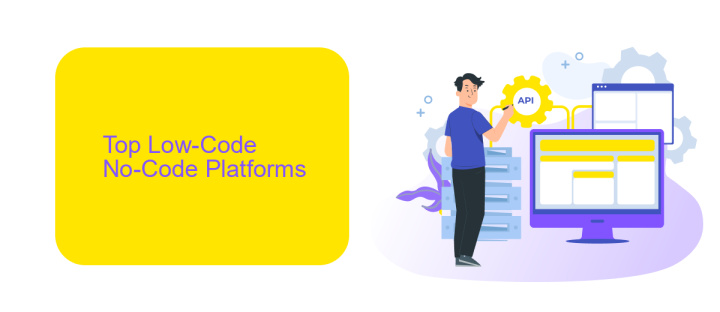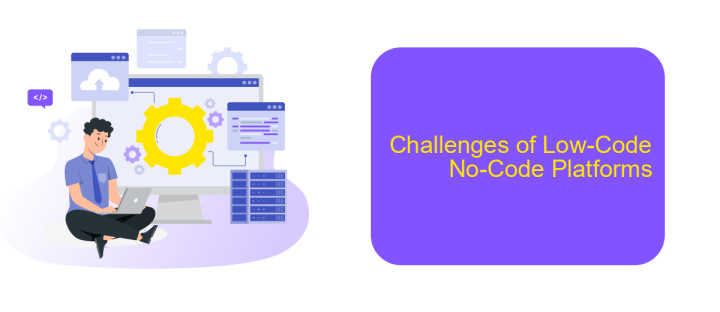Top Low-Code No-Code Platforms
In today's fast-paced digital landscape, low-code and no-code platforms have emerged as game-changers, enabling businesses and individuals to develop applications with minimal coding knowledge. These platforms empower users to create, customize, and deploy software solutions quickly and efficiently. In this article, we explore the top low-code and no-code platforms that are revolutionizing the way we build technology.
Introduction
In today's fast-paced digital landscape, businesses are constantly seeking ways to accelerate their development processes and improve efficiency. Low-code and no-code platforms have emerged as powerful tools that enable organizations to build applications quickly with minimal coding knowledge. These platforms democratize software development, allowing even non-technical users to create robust solutions.
- Streamlined development processes
- Reduced costs and time-to-market
- Enhanced collaboration between technical and non-technical teams
One of the standout features of these platforms is their ability to integrate seamlessly with various services and tools. For instance, ApiX-Drive simplifies the integration process by offering a user-friendly interface to connect different applications without writing a single line of code. This not only boosts productivity but also ensures that businesses can adapt quickly to changing needs and technologies.
Top Low-Code No-Code Platforms

Low-code and no-code platforms have revolutionized the way businesses approach application development, enabling faster and more efficient processes. These platforms provide visual interfaces and pre-built modules, allowing users to create applications with minimal coding knowledge. Some of the top platforms in this space include Microsoft Power Apps, which integrates seamlessly with other Microsoft services, and OutSystems, known for its robust functionality and scalability. These tools empower businesses to innovate and adapt quickly without the need for extensive coding expertise.
Another noteworthy platform is ApiX-Drive, which specializes in setting up integrations between various applications and services. With ApiX-Drive, users can automate workflows and synchronize data across multiple platforms effortlessly. This capability is particularly valuable for businesses looking to streamline operations and improve efficiency. Additionally, platforms like Appian and Mendix offer comprehensive solutions for enterprise-level application development, providing tools for both professional developers and business users. These low-code and no-code platforms are transforming the landscape of application development, making it accessible to a broader audience.
Benefits of Low-Code No-Code Platforms

Low-code and no-code platforms offer numerous advantages for businesses and developers alike, making application development more accessible and efficient. These platforms empower users to create applications with minimal coding knowledge, significantly reducing the time and cost involved in traditional software development.
- Speed and Efficiency: By utilizing pre-built components and drag-and-drop interfaces, these platforms enable rapid application development and deployment.
- Cost-Effectiveness: Reducing the need for extensive coding expertise lowers development costs and allows businesses to allocate resources more effectively.
- Accessibility: Non-technical users can participate in the development process, fostering innovation and collaboration across different departments.
- Scalability: Many low-code and no-code platforms offer robust scalability options, ensuring that applications can grow with the business.
- Integration Capabilities: Tools like ApiX-Drive facilitate seamless integration with various services and applications, enhancing the functionality and connectivity of the developed solutions.
In conclusion, low-code and no-code platforms democratize the development process, enabling faster, more cost-effective, and collaborative application creation. By leveraging these platforms, businesses can stay competitive and responsive to market demands, while also ensuring that their applications are scalable and well-integrated with existing systems.
Challenges of Low-Code No-Code Platforms

While low-code and no-code platforms offer numerous advantages, they also come with their own set of challenges. One of the primary concerns is the potential for limited customization. Since these platforms often rely on pre-built templates and components, users may find it difficult to implement highly specific or complex features.
Another challenge is the dependency on the platform provider. If the provider experiences downtime or decides to discontinue a service, it can significantly impact the businesses relying on that platform. Additionally, there may be hidden costs associated with scaling and additional features, which can become a financial burden.
- Limited customization options
- Dependency on platform providers
- Hidden costs for scaling and additional features
- Security and compliance concerns
Integrating low-code and no-code platforms with existing systems can also be challenging. However, services like ApiX-Drive can help streamline this process by offering robust integration solutions. Finally, while these platforms are designed to be user-friendly, there is still a learning curve, especially for users with no technical background.


Conclusion
In conclusion, low-code and no-code platforms are revolutionizing the way businesses develop applications, making it accessible for non-technical users to create and deploy solutions quickly and efficiently. These platforms significantly reduce the time and cost associated with traditional software development, allowing organizations to stay competitive in a rapidly evolving digital landscape. By empowering a broader range of employees to participate in the development process, companies can foster innovation and agility within their teams.
Moreover, with the integration capabilities offered by services like ApiX-Drive, businesses can seamlessly connect various applications and automate workflows without extensive coding knowledge. This not only enhances productivity but also ensures that different systems within an organization work harmoniously together. As the demand for digital transformation continues to grow, leveraging low-code and no-code platforms, along with powerful integration tools, will be crucial for businesses aiming to streamline operations and accelerate growth.
FAQ
What are low-code and no-code platforms?
Who can benefit from using low-code/no-code platforms?
How do low-code/no-code platforms handle integrations with other software?
Are low-code/no-code platforms secure?
Can low-code/no-code platforms scale with my business?
Apix-Drive will help optimize business processes, save you from a lot of routine tasks and unnecessary costs for automation, attracting additional specialists. Try setting up a free test connection with ApiX-Drive and see for yourself. Now you have to think about where to invest the freed time and money!

